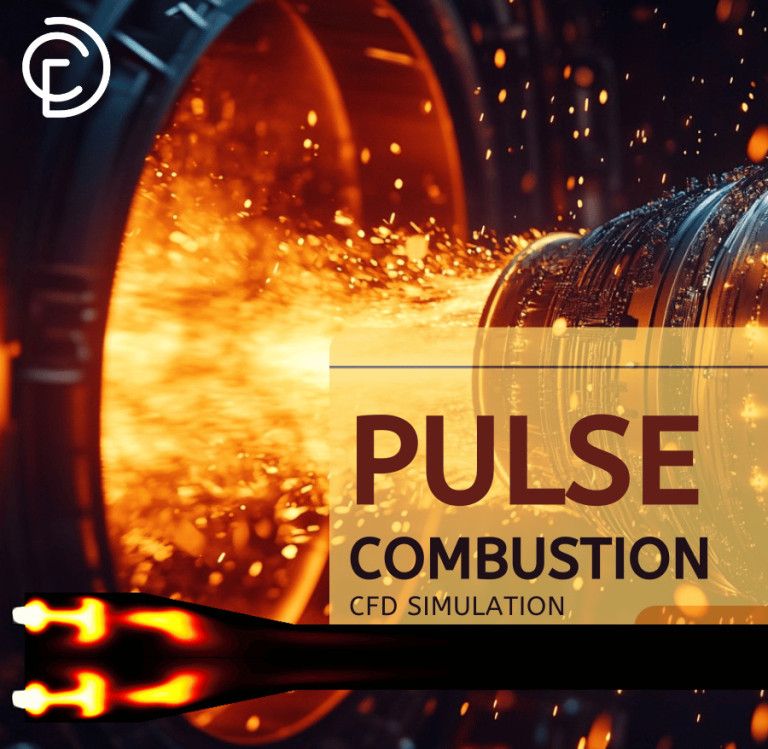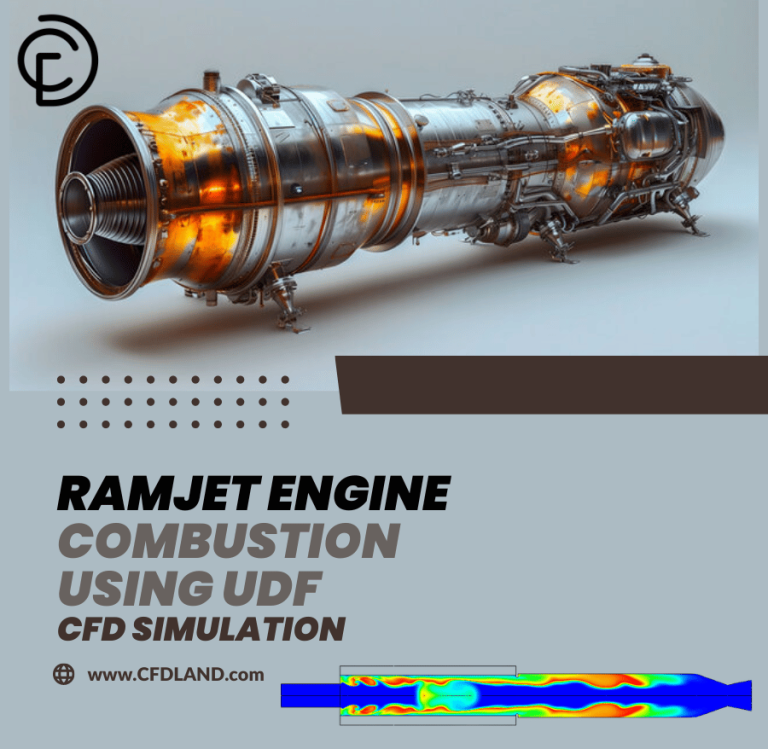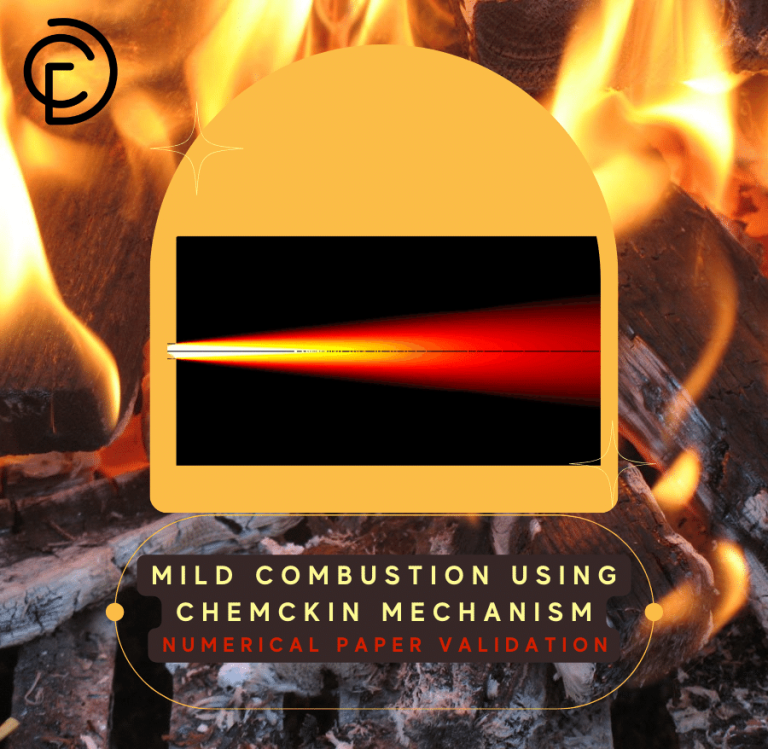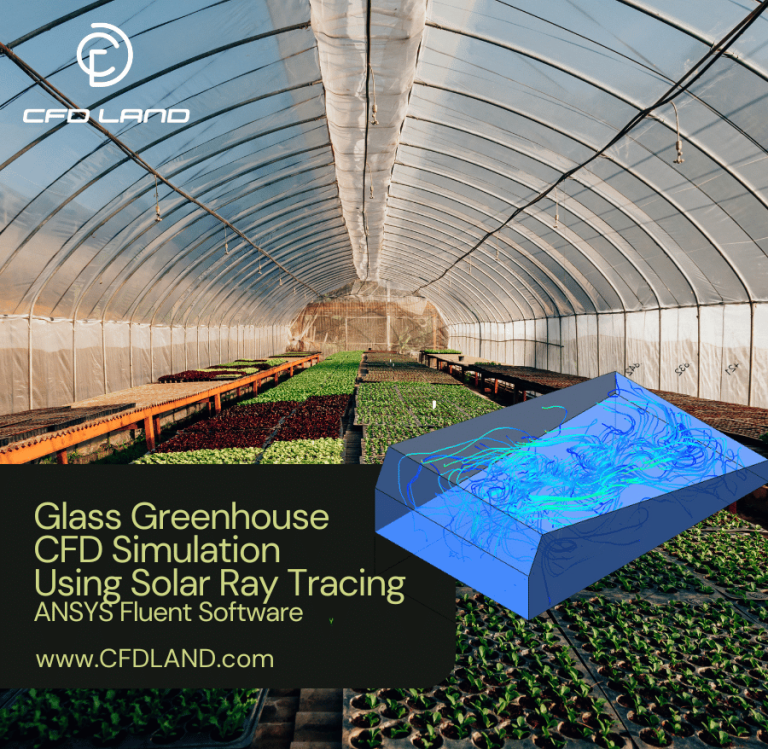Methane Combustion CFD Tutorial with Excess Air, A Complete Guide to NOx Formation Fluent Simulation
Methane Combustion CFD Tutorial with Excess Air, A Complete Guide to NOx Formation Fluent Simulation
- Upon ordering this product, you will be provided with a geometry file, a mesh file, and an in-depth Training Video that offers a step-by-step training on the simulation process.
- For any more inquiries regarding the product, please do not hesitate to reach out to us at info@CFDLAND.com or through our online support assistant.
€69
Methane combustion is a fundamental chemical reaction that powers a significant portion of the world’s energy infrastructure, from power plants to domestic heating. The process involves burning methane (CH4) with oxygen (O2) to produce carbon dioxide (CO2), water vapor (H2O), and a large amount of heat. In an ideal, or “stoichiometric,” reaction, exactly two molecules of oxygen are needed for every one molecule of methane. However, in real-world engines and burners, combustion is often performed with more air than is theoretically needed. This is known as Methane Combustion with excess air. Engineers use excess air to ensure all the fuel is burned completely and to help control the very high temperatures inside the combustor. While efficient, this high-temperature combustion in air (which is ~79% nitrogen) creates a serious environmental problem: the formation of nitrogen oxides, commonly known as NOx. NOx is a major pollutant that contributes to acid rain, smog, and respiratory problems. Therefore, predicting and minimizing its formation is a critical goal in modern engineering design. This project details a Methane Combustion CFD simulation using ANSYS Fluent. We will model the combustion of methane with 28% excess air to analyze the temperature distribution, flow patterns, and most importantly, the mechanisms behind NoX Formation CFD.
CH4 + 2O2 → CO2 + 2H2O
Regarding 28% excess air, the balanced chemical equation is changed to the following equation:
CH4 + 2.56O2 + 9.6256N2 ® CO2 + 2H2O + 0.56O2 + 9.6256N2
Simulation Process – Modeling Methane Combustion and NOx Formation with Fluent
The simulation was performed on a cylindrical combustor geometry, where a high-speed jet of methane expands and mixes with a slower co-flow of air. A structured mesh grid was generated for this domain, resulting in a total of 34100 elements. The accuracy of a Methane Combustion Fluent simulation depends entirely on the selection of the correct physical models. The Species Transport model was enabled to solve for the chemical reactions between the multiple species involved (CH4, O2, N2, CO2, H2O, NO, NO2).
To model the complex interaction between the turbulent fluid flow and the chemical reactions, the Eddy Dissipation model was used. This model assumes that the reaction rate is controlled by the speed at which turbulence can mix the fuel and oxidizer. For the NoX Formation Fluent Simulation, a comprehensive approach was taken by including two primary mechanisms: the Thermal NOx model, which is dominant at high temperatures, and the Prompt NOx model, which accounts for formation in the early stages of the flame. This dual-model approach is essential for obtaining a highly accurate prediction of total NOx emissions
Post-processing – CFD Analysis of Methane combustion with Excess air
The simulation results provide a clear picture of the complex interplay between heat release, fluid dynamics, and pollutant generation inside the combustor. The temperature contour in Figure 1 reveals the core structure of the flame, with the highest temperatures located just downstream from the fuel and air inlets. This high-temperature zone is where the combustion reaction is most intense, indicating the rapid consumption of methane and the formation of primary products like CO2 and H2O. This visualization confirms that the simulation is successfully capturing the main exothermic reaction zone, which is the primary driver for all subsequent physical and chemical processes, including the formation of pollutants.
By analyzing the velocity and NOx contours together (Figures 2 and 3), we can understand the precise mechanism of pollutant formation. The velocity field shows a high-speed central jet that gradually slows down, creating large recirculation zones near the walls. These slower-moving zones are critical. While the fast-moving central jet has a very short residence time, limiting NOx formation there, the recirculation zones trap the hot gases. This combination of high temperatures and long residence times creates the perfect conditions for the Zeldovich (Thermal NOx) mechanism to occur. As seen in Figure 2, the highest concentrations of NOx are found precisely in these hot, slow-moving, post-flame regions. This detailed analysis proves that NOx formation is not uniform; it is heavily concentrated in specific zones dictated by the flow patterns, a key insight for designing cleaner, low-NOx combustion systems.

Figure 2 & 3: NOx mass fraction from the NoX Formation CFD analysis, highlighting the regions of high pollutant concentration – Velocity field from the Methane Combustion with excess air CFD simulation, showing the central jet and recirculation zones that influence NOx formation.
We pride ourselves on presenting unique products at CFDLAND. We stand out for our scientific rigor and validity. Our products are not based on guesswork or theoretical assumptions like many others. Instead, most of our products are validated using experimental or numerical data from valued scientific journals. Even if direct validation isn’t possible, we build our models and assumptions on the latest research, typically using reference articles to approximate reality.
Yes, we’ll be here . If you have trouble loading files, having technical problems, or have any questions about how to use our products, our technical support team is here to help.
You can load geometry and mesh files, as well as case and data files, using any version of ANSYS Fluent.
€165 Original price was: €165.€135Current price is: €135.

€195 Original price was: €195.€145Current price is: €145.

€175 Original price was: €175.€145Current price is: €145.

€380 Original price was: €380.€185Current price is: €185.

€240 Original price was: €240.€175Current price is: €175.

€240 Original price was: €240.€115Current price is: €115.
























Reviews
There are no reviews yet.